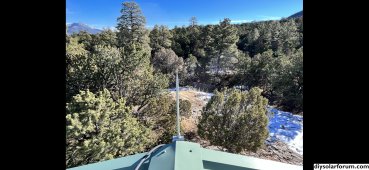Im currently building what I refer to as my "survival shack" which I will live in at 9000ft until I have my house built. Its not a conventional build, I made it from 2" square tube with 11ga wall, all fully welded and cross braced. When I originally started it I was thinking of going to Montana on the continental divide (literally) and the place had grizzly, black bear, wolves, moose, mountain lion and pretty much any other bite and scratch/eat candidate you could think of. So it was made to keep a grizzly out long enough that you could at least get to your rifle...
That building sat out in a field in SE Michigan for several years since I ended up not going to Montana after all. I had put a plywood roof on top of the steel framing and then glued an RV type rubber roof down on it using contact cement. Well a few years in I noticed that the rubber roof was damaged but couldnt figure out how the damage occurred. Long story short, I recently brought the building to my house to rebuild since the roof was rotted out, given the damage to the waterproofing membrane. When I got up on the roof to drill out the rivets holding on the ply I found it had a direct lightning strike. It appeared that the frame of the building had dissipated a large amount of the energy in the strike, but some of the plasma had penetrated the roofing membrane and got between it and the ply and the hot gas had inflated the roof membrane like a balloon until it popped. That was what cause a strip about 2-3ft wide to be ripped off the roof from the center to one edge, a distance of about 6 ft.
Moving forward, when I set up this building in Colorado at 9000ft where there is a LOT of lightning in the afternoon in summer, I will have a pole planted next to the building going to a height of at least 20ft with an upward pointing "brush" made from copper wire and with a bare copper wire running down to an earth spike driven into the ground. This, I hope would protect the shack, which is clad in steel roofing and siding from a direct strike. I will do something similar with my solar array, when the time comes. I see this as a lightning conductor, not a building ground system. The building and its electrical installation will have its own ground.



